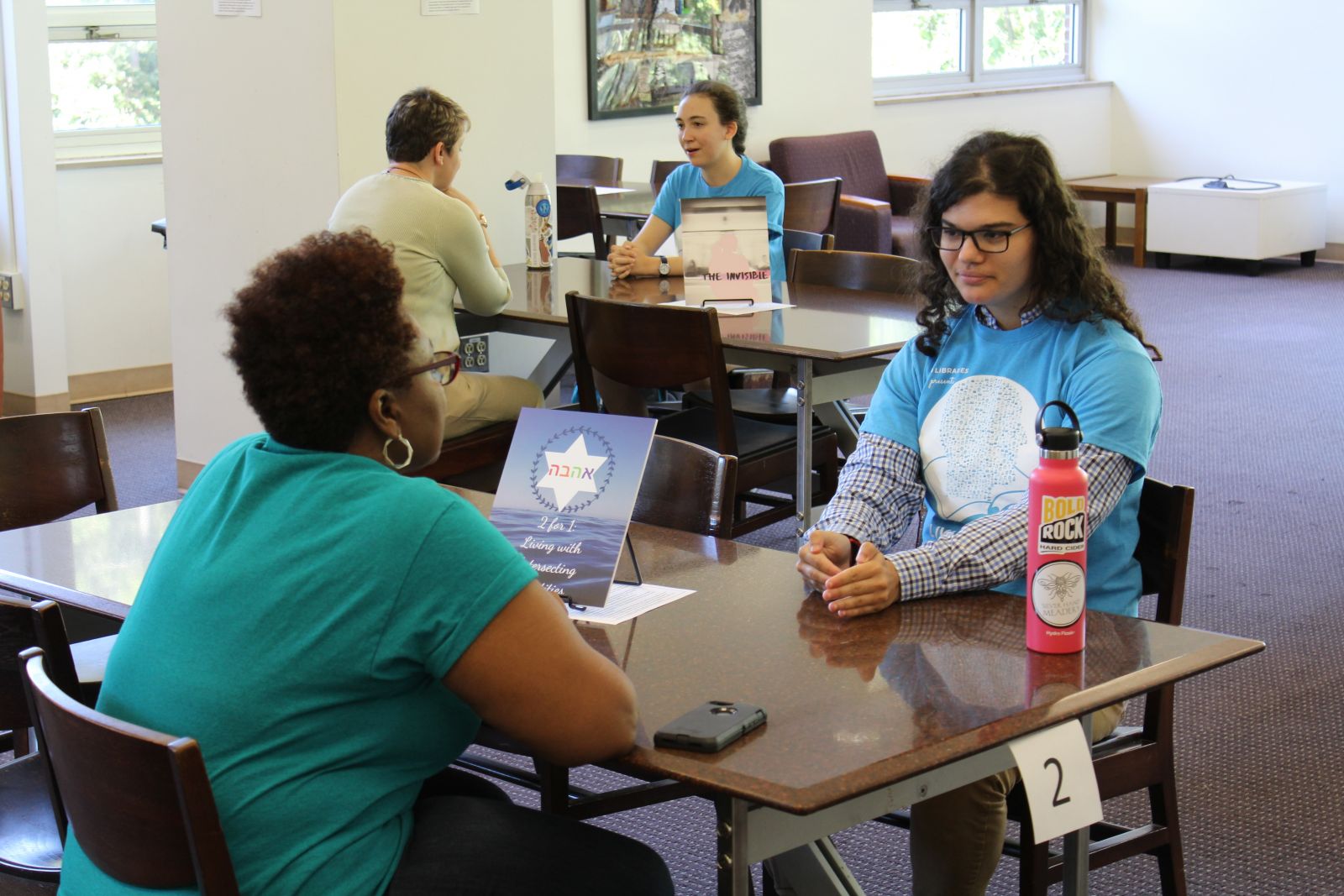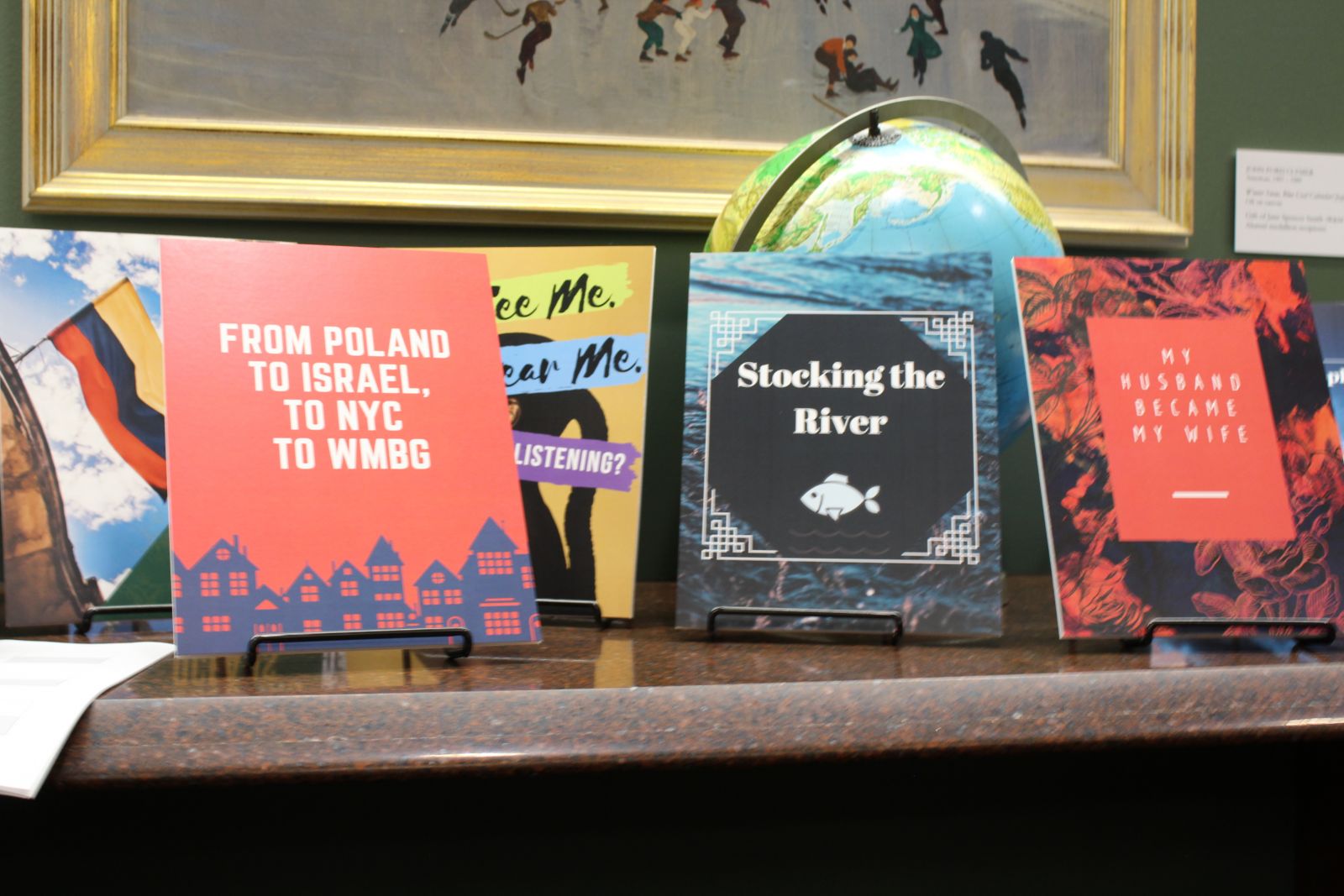By Jordan Williams, William & Mary Libraries
W&M Libraries offered human "books" for checkout last week. The unique opportunity allowed attendants to learn from those whose backgrounds and identities differed from their own.

One of the books was Library Fellow Shayna Gutcho. She discussed her experiences as a Jewish gay woman and how those identities intersect.
“I find my story important to share,” Gutcho said. “The default narratives that our society is accustom to hearing are straight, white, male, and Christian. My life is not the default story, which makes my lived experience important to tell. I take pride in my identities, as they make me who I am and show to others the beauty in inclusion."
Each living book highlighted the vast array of lived experiences from W&M and the Williamsburg community. Other stories shared included being diagnosed with ADHD at a late age, immigrating from Colombia, and the Patawomeck Tribe from colonial times to the present.
“In recent years, the Libraries have definitely tried to increase our representation of diverse voices through our collections and programming,” librarian Liz Bellamy said. “This (event) is just a continuation of letting people who might not be in the majority tell their story.”
Bellamy, who planned the event, learned of the human book concept while working at Radford University's library. She said the idea was created by an international organization called The Human Library. It’s a movement that gives a people, especially those from underrepresented communities, a chance to talk with individuals who might not normally meet them.

While planning the event, Bellamy wanted to build in room for deep conversation during each interaction. She allowed the living books to share a piece of themselves instead of trying to represent their entire community.
“Rather than having someone represent a Muslim, we have a person who happens to be Muslim talk about a significant story from their life,” Bellamy explained. “It lets them talk about themselves on their terms.”
Librarian Troy Davis took advantage of the unique opportunity to develop new connections by "checking out" three books.
“I enjoyed seeing the mixture of students, faculty and staff all together in one event,” he said. “Often when we have events, it’s for students or faculty only. I thought it was great to have a variety of people involved.”
Davis said the book he enjoyed reading the most was Patawomeck People, Then and Now.
“For me, that story was very interesting,” he said. “It was something I knew nothing about. From the description, I could tell the other two books were going to be a story about personal conflict. As a human being, I’ve experienced conflict and knew what to expect there. But with the Patawomeck Tribe, I learned a really good lesson on their history such as how Indian tribes are recognized by the state of Virginia and other things I just didn’t know.”

